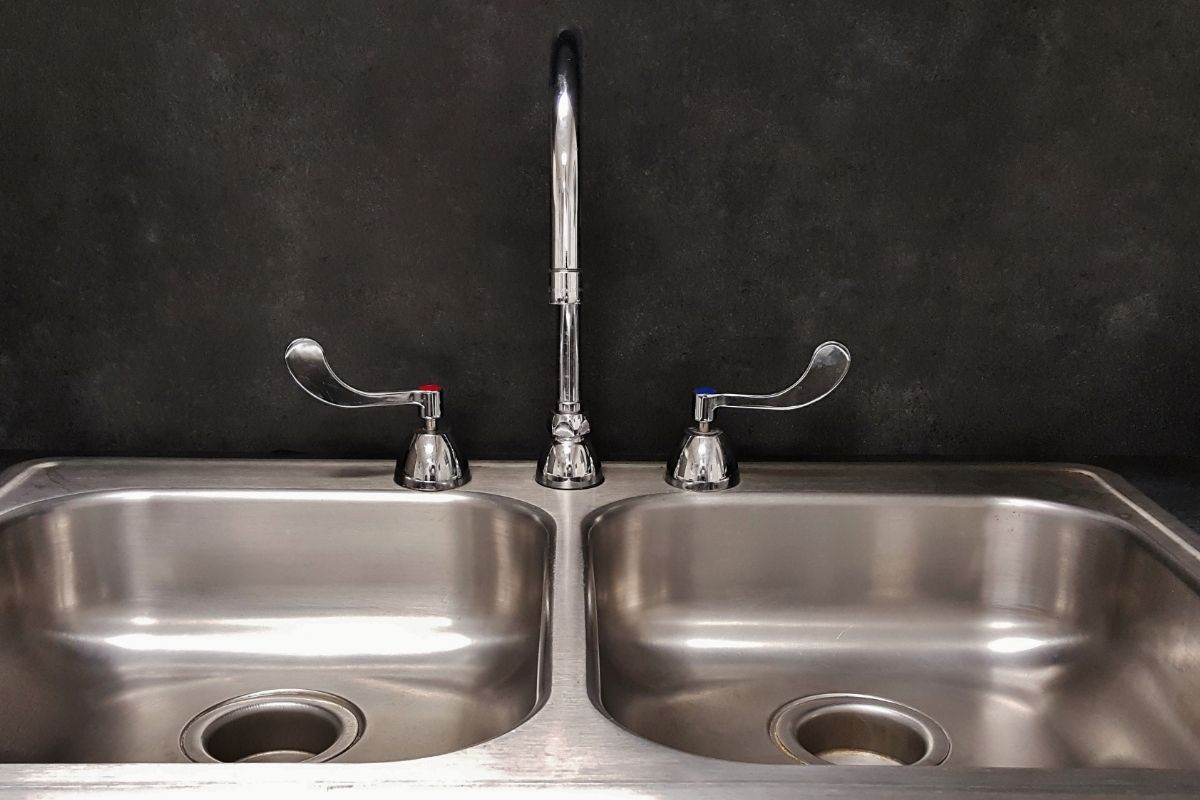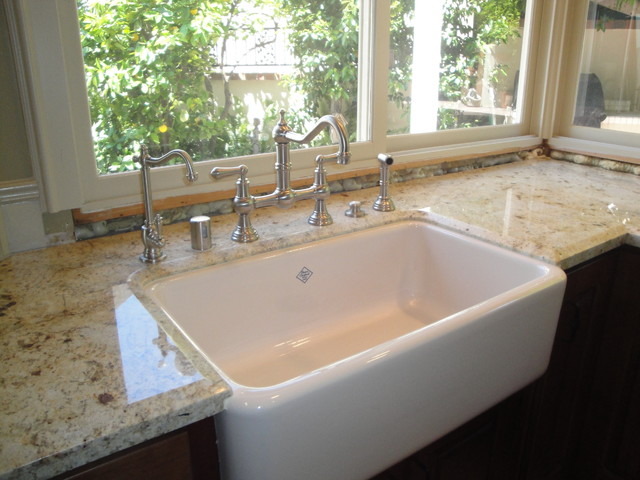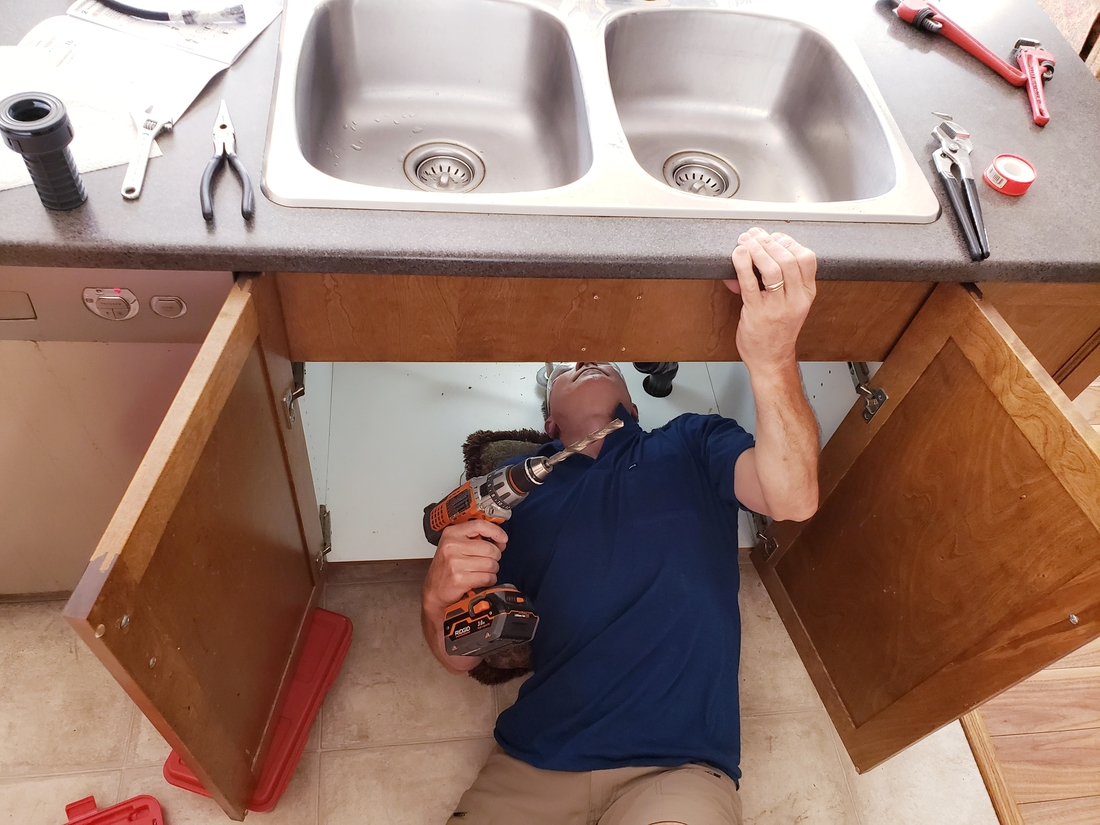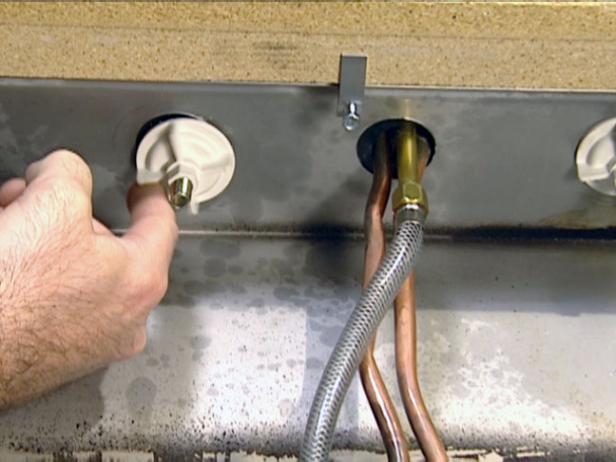If you're experiencing issues with your 2-hole kitchen sink faucet, don't worry – you're not alone. Many homeowners encounter problems with their faucets, but luckily, most of these issues can be easily fixed with a bit of troubleshooting. In this guide, we'll go over some common problems with 2-hole kitchen sink faucets and how to troubleshoot them.How to Troubleshoot a 2-Hole Kitchen Sink Faucet
Leaking, low water pressure, and temperature control issues are some of the most common problems that arise with 2-hole kitchen sink faucets. These issues can be caused by a variety of factors, including worn-out parts, mineral buildup, and improper installation.Common Problems with 2-Hole Kitchen Sink Faucets
Leaking is one of the most frustrating issues to deal with when it comes to faucets. In 2-hole kitchen sink faucets, leaks can occur in the spout, the handles, or even in the pipes underneath the sink. To fix a leaky faucet, you'll need to first determine the source of the leak. If it's coming from the spout, it could be due to a worn-out O-ring or a faulty valve. If the handles are leaking, it could be a problem with the cartridge or the seals. In some cases, tightening the connections or replacing the affected parts can solve the issue.Fixing Leaks in 2-Hole Kitchen Sink Faucets
The cartridge is a crucial component of a 2-hole kitchen sink faucet as it controls the flow of water. If you're experiencing issues with water flow or temperature control, it may be time to replace the cartridge. First, shut off the water supply to the faucet and then carefully remove the handle and the cartridge. Install the new cartridge and reassemble the faucet. If you're unsure about the process, it's best to consult a professional plumber.Replacing a Cartridge in a 2-Hole Kitchen Sink Faucet
Temperature control is important for both comfort and safety when using your kitchen sink. If you find that the water is too hot or too cold, the first step is to check the temperature setting on your water heater. If the temperature is set correctly, but you're still experiencing issues, it could be due to a faulty mixing valve. In this case, it's best to call a plumber to replace the valve for you.Adjusting Water Temperature on a 2-Hole Kitchen Sink Faucet
Regular cleaning and maintenance can go a long way in preventing issues with your 2-hole kitchen sink faucet. Mineral buildup can cause clogs and affect water flow, so it's important to regularly clean the faucet with a mild soap and warm water. You can also use a vinegar solution to remove any mineral deposits. Additionally, check for any loose connections or parts and tighten them if necessary.Cleaning and Maintaining 2-Hole Kitchen Sink Faucets
If you're planning on installing a new 2-hole kitchen sink faucet, it's important to follow the manufacturer's instructions carefully. Start by shutting off the water supply and removing the old faucet. Then, install the new faucet according to the instructions provided. Make sure all connections are tight and test the faucet before using it regularly.How to Install a 2-Hole Kitchen Sink Faucet
If you're experiencing low water pressure in your 2-hole kitchen sink faucet, it could be due to a clog or a faulty aerator. To troubleshoot this issue, remove the aerator and clean it thoroughly. If the water pressure is still low, it could be due to a clog in the pipes. In this case, it's best to call a professional plumber to diagnose and fix the problem.Troubleshooting Low Water Pressure in 2-Hole Kitchen Sink Faucets
Just like leaking, dripping can also be caused by worn-out parts or loose connections. If your faucet is dripping, check for any loose connections and tighten them as needed. If that doesn't solve the problem, it may be time to replace the affected parts. It's important to fix a dripping faucet as soon as possible to prevent water waste and potential damage to your sink and cabinets.Fixing a Dripping 2-Hole Kitchen Sink Faucet
O-rings are small rubber rings that help create a watertight seal in your 2-hole kitchen sink faucet. Over time, these rings can wear out and cause leaks. To replace them, you'll need to first shut off the water supply and then remove the faucet handle. Replace the worn-out O-rings with new ones and reassemble the faucet. If you're unsure about the process, it's best to seek professional help. In conclusion, troubleshooting issues with your 2-hole kitchen sink faucet may seem daunting, but with a bit of knowledge and patience, most problems can be easily fixed. However, if you're unsure or uncomfortable with DIY repairs, it's always best to call a professional plumber for help. Regular maintenance and proper installation can also go a long way in preventing issues with your faucet in the future.Replacing O-Rings in 2-Hole Kitchen Sink Faucets
Troubleshooting 2 Hole Kitchen Sink Faucets

Introduction
 Kitchen faucets are an integral part of any house design, providing functionality and style to one of the most used areas in a home. However, like any other household item, they can experience issues that may require troubleshooting. One common type of kitchen faucet is the 2 hole kitchen sink faucet, which can sometimes run into problems. In this article, we will discuss some common troubleshooting tips for 2 hole kitchen sink faucets and how to fix them.
Kitchen faucets are an integral part of any house design, providing functionality and style to one of the most used areas in a home. However, like any other household item, they can experience issues that may require troubleshooting. One common type of kitchen faucet is the 2 hole kitchen sink faucet, which can sometimes run into problems. In this article, we will discuss some common troubleshooting tips for 2 hole kitchen sink faucets and how to fix them.
Low Water Pressure
 One issue that homeowners may encounter with their 2 hole kitchen sink faucet is low water pressure. This can be caused by a number of factors, such as a clogged aerator, a malfunctioning cartridge, or a faulty valve. To fix this problem, start by checking the aerator for any debris that may be blocking the flow of water. If that doesn't solve the issue, then it may be necessary to replace the cartridge or valve. It is important to follow the manufacturer's instructions and use the correct replacement parts to ensure proper function.
One issue that homeowners may encounter with their 2 hole kitchen sink faucet is low water pressure. This can be caused by a number of factors, such as a clogged aerator, a malfunctioning cartridge, or a faulty valve. To fix this problem, start by checking the aerator for any debris that may be blocking the flow of water. If that doesn't solve the issue, then it may be necessary to replace the cartridge or valve. It is important to follow the manufacturer's instructions and use the correct replacement parts to ensure proper function.
Leaking Faucet
 Another common problem with 2 hole kitchen sink faucets is a leaking faucet. This can be caused by worn out washers, seals, or O-rings. To fix this issue, first, turn off the water supply to the faucet. Then, disassemble the faucet and check the washers, seals, and O-rings for any damage. If they appear worn or damaged, replace them with new ones. It is also important to check the faucet's connections and tighten them if necessary. Once everything is back together, turn the water supply back on and test the faucet for any leaks.
Another common problem with 2 hole kitchen sink faucets is a leaking faucet. This can be caused by worn out washers, seals, or O-rings. To fix this issue, first, turn off the water supply to the faucet. Then, disassemble the faucet and check the washers, seals, and O-rings for any damage. If they appear worn or damaged, replace them with new ones. It is also important to check the faucet's connections and tighten them if necessary. Once everything is back together, turn the water supply back on and test the faucet for any leaks.
Hot and Cold Water Issues
 If you are experiencing problems with getting hot or cold water from your 2 hole kitchen sink faucet, it could be due to a faulty temperature control valve or a broken diverter. The temperature control valve regulates the mix of hot and cold water, while the diverter directs the flow of water between the faucet and sprayer. If either of these components is not functioning properly, it can cause issues with water temperature. In this case, it may be necessary to replace the valve or diverter to fix the problem.
If you are experiencing problems with getting hot or cold water from your 2 hole kitchen sink faucet, it could be due to a faulty temperature control valve or a broken diverter. The temperature control valve regulates the mix of hot and cold water, while the diverter directs the flow of water between the faucet and sprayer. If either of these components is not functioning properly, it can cause issues with water temperature. In this case, it may be necessary to replace the valve or diverter to fix the problem.
Conclusion
 In conclusion, troubleshooting 2 hole kitchen sink faucets is essential for maintaining a functional and efficient kitchen. By following these tips and properly maintaining your faucet, you can ensure that it continues to provide you with clean water for all your cooking and cleaning needs. Remember to always refer to the manufacturer's instructions and use the correct replacement parts for any repairs. With the right knowledge and tools, you can easily troubleshoot and fix any issues that may arise with your 2 hole kitchen sink faucet.
In conclusion, troubleshooting 2 hole kitchen sink faucets is essential for maintaining a functional and efficient kitchen. By following these tips and properly maintaining your faucet, you can ensure that it continues to provide you with clean water for all your cooking and cleaning needs. Remember to always refer to the manufacturer's instructions and use the correct replacement parts for any repairs. With the right knowledge and tools, you can easily troubleshoot and fix any issues that may arise with your 2 hole kitchen sink faucet.
















































/faucet-resized-56a4e8435f9b58b7d0d9d64f.jpg)













































